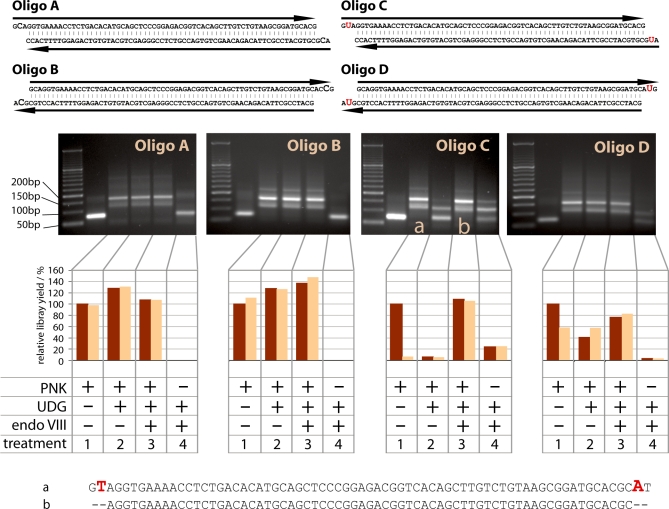Figure 2.
Demonstration of UDG/endoVIII repair on synthetic oligonucleotides. 1 μg of each of four synthetic double-stranded oligos A-D (top) was subjected to 454 adaptor ligation after enzymatic repair in four conditions: (1) Incubation with PNK followed by addition of T4 polymerase; (2) PNK and UDG followed by T4 polymerase; (3) PNK, UDG and endoVIII followed by T4 polymerase; (4) UDG and endoVIII followed by T4 polymerase (i.e. no PNK). Products were first visualized on agarose gels (middle). The first lane on each gel after the ladder is the untreated oligo. Major bands in the other lanes correspond to the unligated oligos (62–67 bp), the oligos plus one 44-base adaptor and the oligos plus two 44-base adaptors. For some products higher weight bands are visible that probably indicate end-to-end chimeras of the oligos and adaptors. The cause of the faint, diffuse bands seen between 150 and 200 bp in the untreated oligos are unknown but may be artifacts of oligo synthesis. Ligated products were also quantified by qPCR without (dark brown) or with (light brown) prior incubation with UDG. The products marked a and b were sequenced directly on the 454 platform (bottom).

